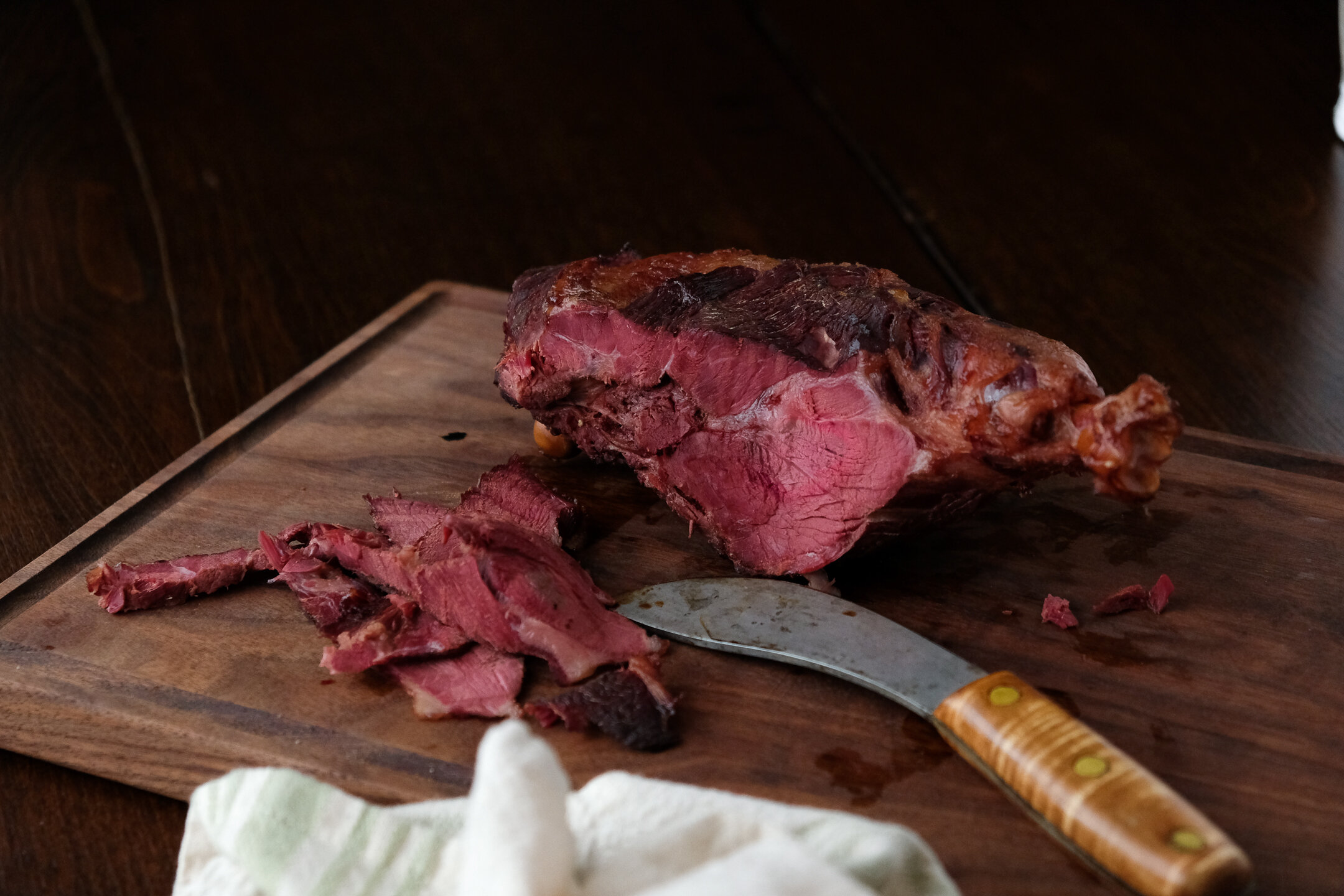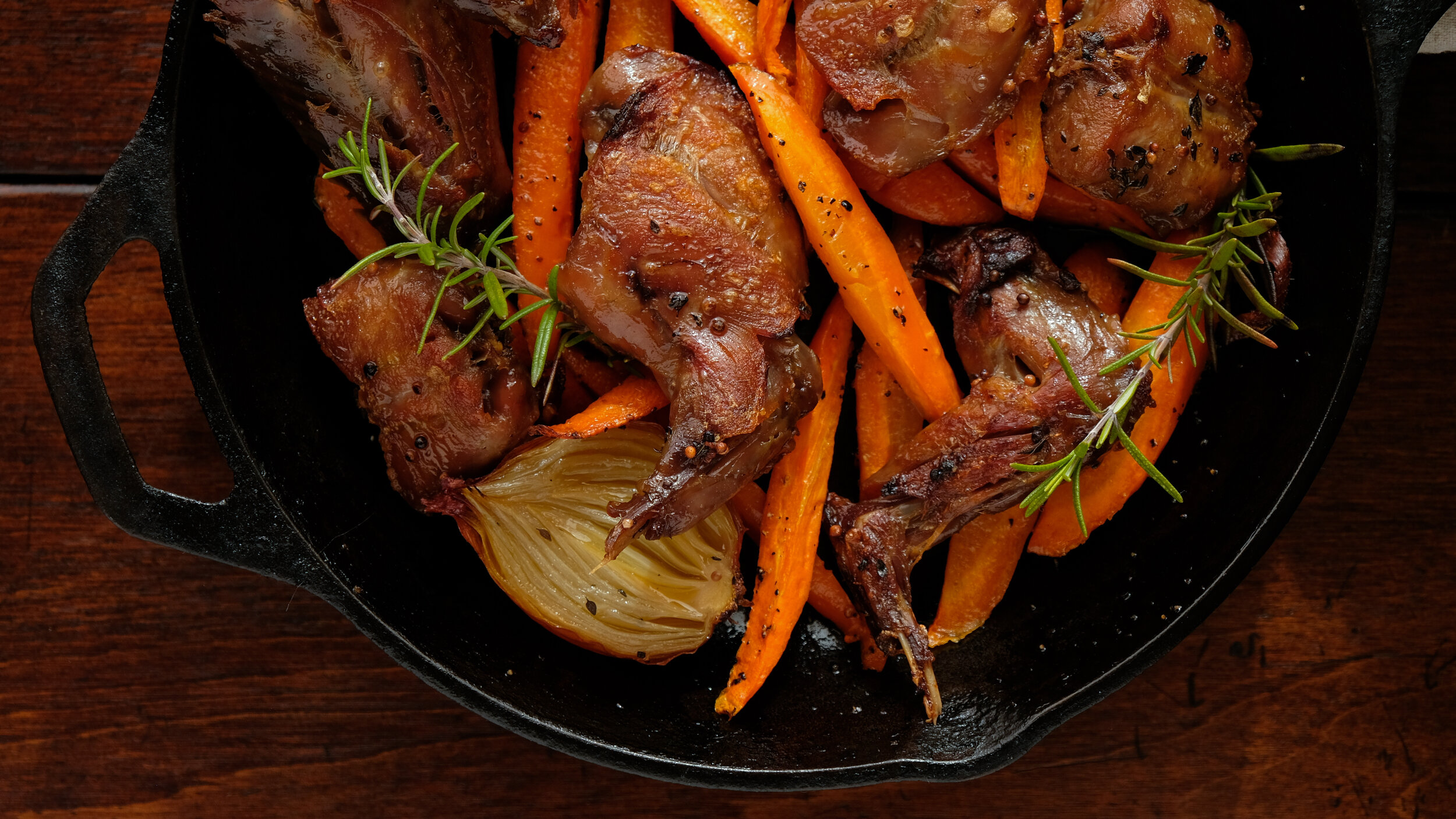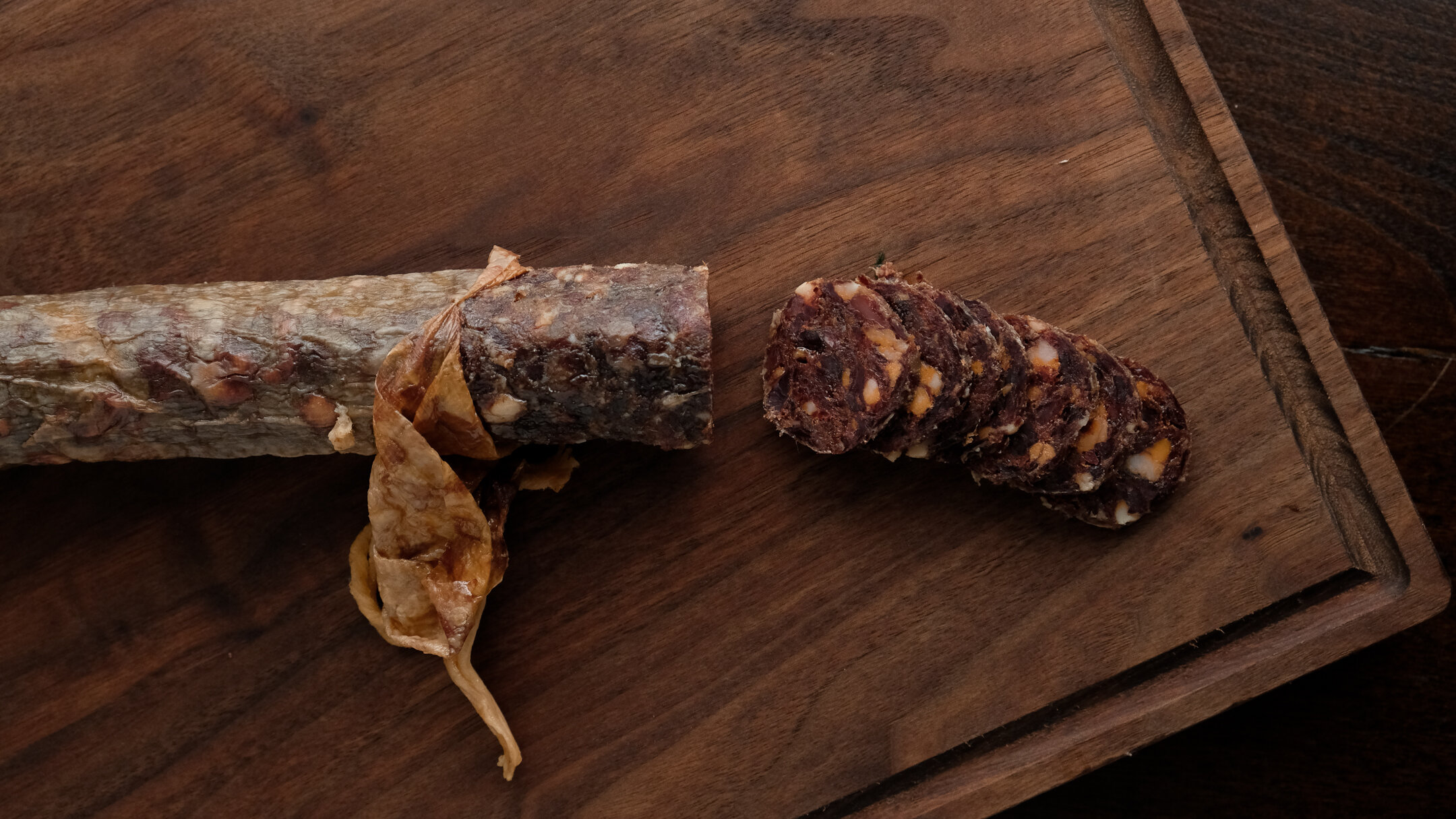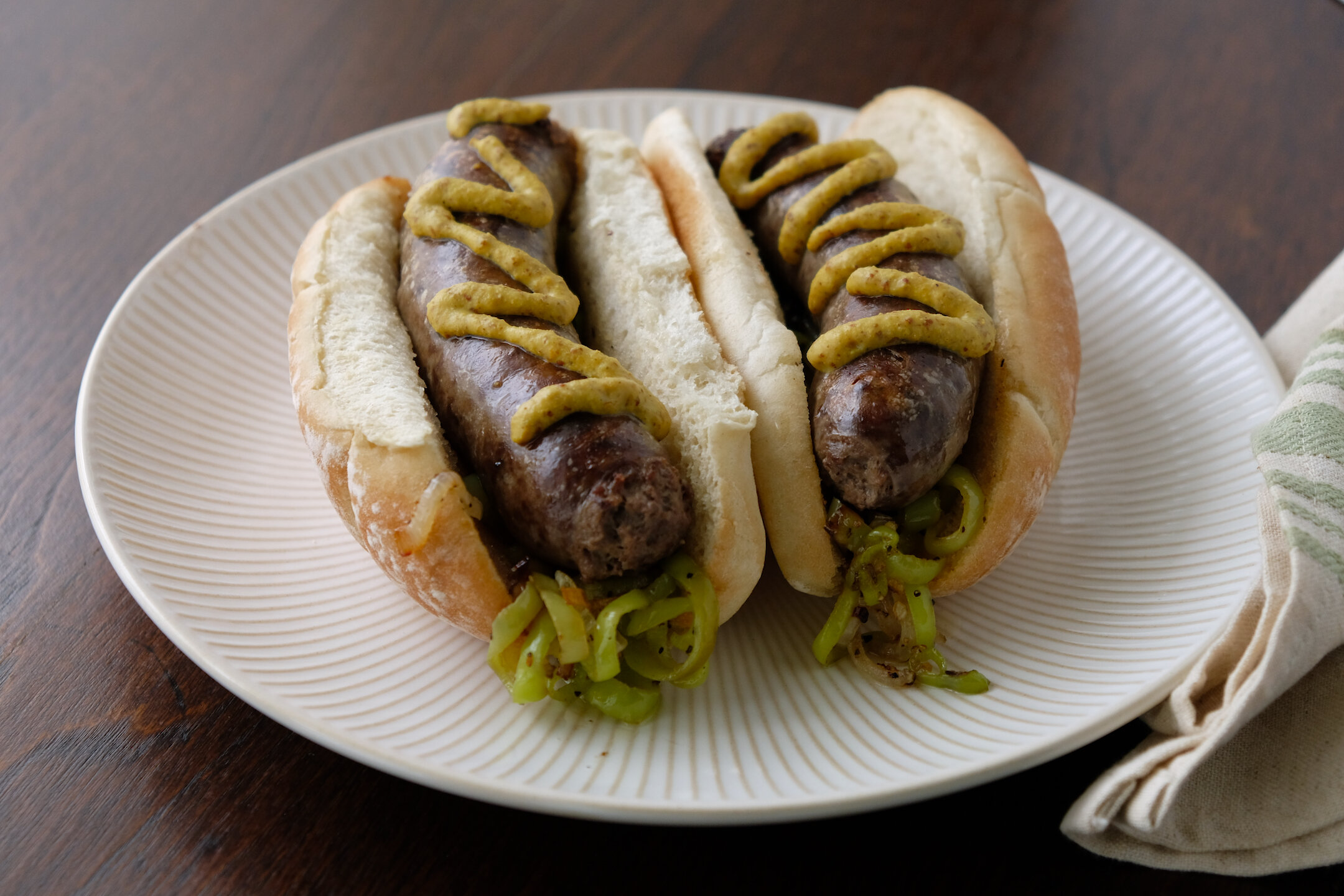Honey-Brined Beaver Ham

On a chilly December morning a few years ago, Wade & I were standing in a creek bottom with two dead beavers and a whole bunch of trapping gear at our feet, when a kind of giddy excitement struck us.
How in the world did we end up here? What are we doing?
We couldn’t believe our good luck, or maybe we couldn’t believe we thought this was good luck at all. Ten years ago, if you had asked me what I thought future-me would be doing at any given time, trapping beaver would be a punchline.
But there we were, and we were freaking out. This was our first time trapping, and while we had done our research, the difference between reading about something and actually doing it is vast. We were expecting empty traps, and now we had two very real, very dead beavers.
We debated who was going to carry what, and how, and whether we should leave the traps out for one more day (we didn’t), but the one thing we never once debated was what we were going to do with our beavers. For better or for worse, they were going to be table fare. And we were so, so excited about it.
We’d done some research on cooking & eating beaver, but almost everything we had turned up went one of two ways:
You’ll get beaver fever and die
I don’t know anyone who eats it, but I hear mountain men ate the tails.
So we didn’t have much to go on.
Not knowing what to expect was part of the draw. After we skinned the beavers, we stood awestruck at the kitchen counter, marveling at the color of it, the fat, the texture. The meat was clean and sweet-smelling, garnet-colored, and lean, with a thick cap of pristine fat under the skin. One of the greatest regrets of my last few years is that we didn’t save and render all that beautiful, abundant white fat. We had been worried the meat would be greasy and trimmed it all off.
It looked great. It looked better than great. Wade cut out the backstraps and gave them a quick sear. They were incredible. Similar to elk or bison, beaver meat has a deep, woodsy character without any off-flavors, and is lean but succulent. It’s the sort of game meat you could serve to someone who claims not to like game meat. It’s what beef should be.
The beaver was delicious, but even so, we’ve made a decision to limit our take in that swamp. That creek holds a whole family of beavers, and their dam-building has created a wood duck honey-hole that we’re not willing to give up. We watch them sometimes in the early mornings while we’re duck hunting and wish them well. In a few years, one or two might grace our table again, and we’ll be thankful for this animal, which provides not only some of the best game meat we’ve had, but also habitat for the ducks and deer we love to hunt.
Honey-Brined Beaver Ham
If you’ve got a beaver, cut out the tenderloins and backstraps and grill them just like venison. Then make honey-brined beaver ham from the hindquarters. It’s smoky, tender, and rich, and when you’re done frying it up with breakfast or dicing it to mix into braised turnip greens, you can use the bone for lentil soup.
Prep time: 30 minutes active, 5 days inactive
Serves: 4
Ingredients
1 beaver hind quarter
Sous vide device
Brine:
1/2 kilogram warm water
1 1/2 kilogram ice water
250 grams honey
70 grams salt
14 grams instacure #1
Method:
Heat 1/2 kilogram water and add honey, salt, and instacure. Stir until dissolved, then add in cold water and cool the brine to under 40F. Add beaver ham to brine. Brine for 72 hours in refrigerator.
Remove the ham from the brine and reserve around 300 ml of brine. Add ham and reserved brine to a large vacuum sealer bag. Use a much bigger bag than you normally would for a cut this size, as it is much easier to seal the vacuum bag. When most of the air is removed from the bag, hit the “seal” button if your machine has one, otherwise the vacuum will pull the brine past the seal bar and make sealing difficult.
Set sous vide to 148 and cook for 48 hours. When finished cooking, remove from bag and discard brine. Preheat smoker to 200F and smoke for around 1 hour. You just want to impart smoke flavor and give the ham some color- it’s already cooked.
Carve up and serve with anything you like to eat with ham.
































